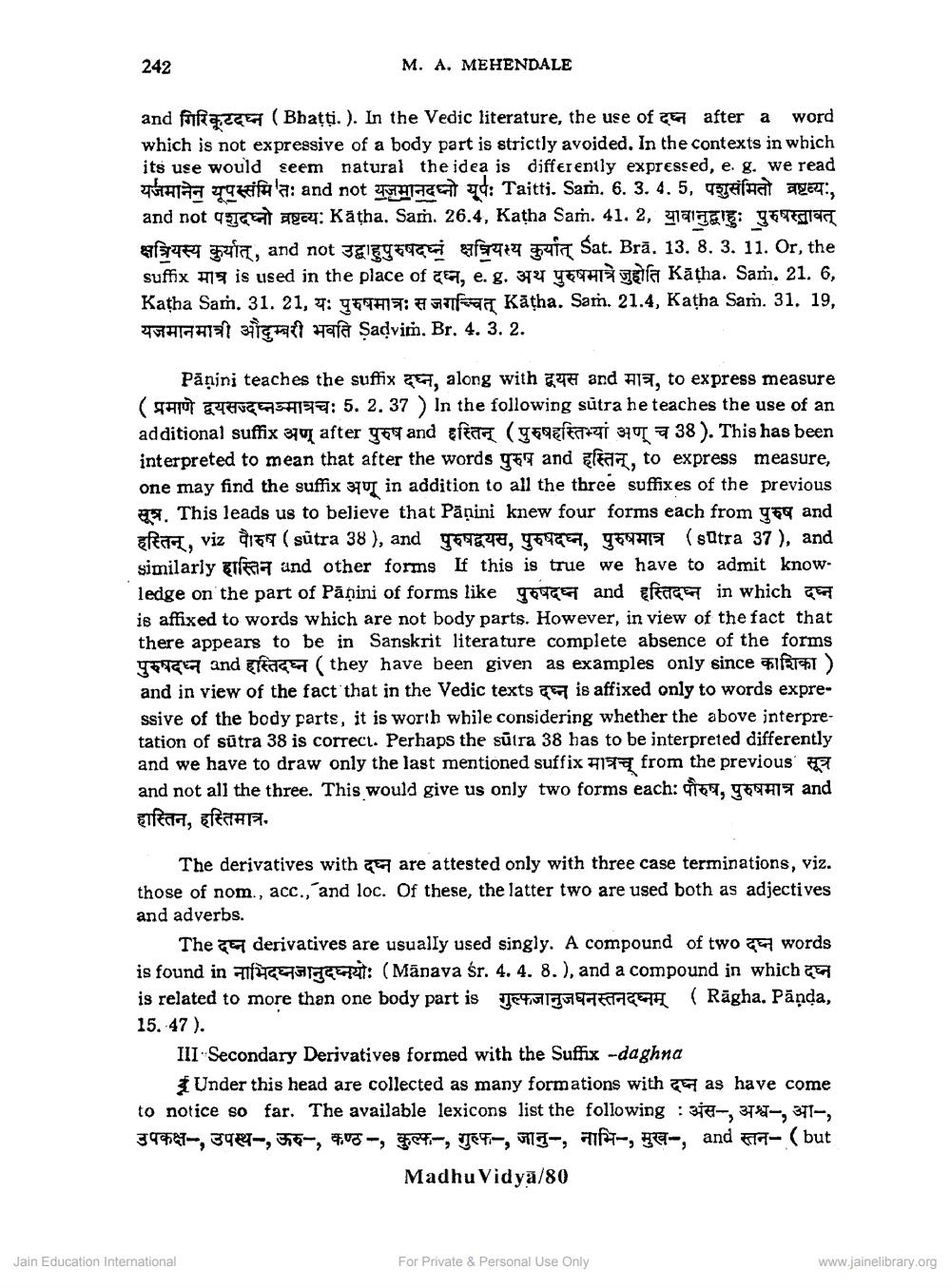________________
242
M. A. MEHENDALE
and foccer (Bhatti. ). In the Vedic literature, the use of ce after a word which is not expressive of a body part is strictly avoided. In the contexts in which its use would seem natural the idea is differently expressed, e. g. we read
ATT Tokiula: and not HTCT : Taitti. Sam. 6. 3. 4. 5, Haat aget, and not agen: Kätha. Sam. 26.4, Katha Sam. 41. 2, yaits: ganglan क्षत्रियस्य कुर्यात्, and not उद्वाहपुरुषदघ्नं क्षत्रियस्य कुर्यात् Sat. Bra. 13. 8. 3. 11. Or, the suffix मात्र is used in the place of दध्न, e.g. अथ पुरुषमात्रे जुहोति Katha. Sam. 21. 6, Katha Sam. 31. 21, 7: TGTH: a Kätha. Sam. 21.4, Katha Sam. 31. 19, यजमानमात्री औदुम्बरी भवति Sadvim. Br. 4. 3. 2.
Pāṇini teaches the suffix 2, along with gue and A1, to express measure (THO UHC65H128: 5. 2. 37 ) In the following sutra he teaches the use of an additional suffix अण् after पुरुष and हस्तिन् (पुरुषहस्तिभ्यां अण् च 38). This has been interpreted to mean that after the words 767 and least, to express measure, one may find the suffix aqu in addition to all the three suffixes of the previous
. This leads us to believe that Pāņini knew four forms each from y#9 and हस्तिन् , viz पौरुष (sātra 38 ), and पुरुषद्वयस, पुरुषदघ्न, पुरुषमात्र (sutra 37), and similarly efe und other forms If this is true we have to admit knowledge on the part of Panini of forms like पुरुषघ्न and हस्तिदध्न in which दुघ्न is affixed to words which are not body parts. However, in view of the fact that there appears to be in Sanskrit literature complete absence of the forms पुरुषदधन and हस्तिदघ्न (they have been given as examples only since काशिका) and in view of the fact that in the Vedic texts 77 is affixed only to words expressive of the body parts, it is worth while considering whether the above interpretation of sūtra 38 is correct. Perhaps the sūira 38 has to be interpreted differently and we have to draw only the last mentioned suffix 197 from the previous and not all the three. This would give us only two forms each: 0167, 69417 and हास्तिन, हस्तिमात्र.
The derivatives with qe are attested only with three case terminations, viz. those of nom., acc., and loc. Of these, the latter two are used both as adjectives and adverbs.
The derivatives are usually used singly. A compound of two words is found in the Ea r t: (Mānava śr. 4. 4. 8.), and a compound in which can is related to more than one body part is įC451CG TETOISETH (Ragha. Pāņda, 15. 47).
III. Secondary Derivatives formed with the Suffix -daghna
Under this head are collected as many formations with 57 as have come to notice so far. The available lexicons list the following : sie-, 372-, 3713997-, re-,575-, 48 - 07-, T69-, -, 127, ge-and ET- (but
Madhu Vidyā/80
Jain Education International
For Private & Personal Use Only
www.jainelibrary.org




